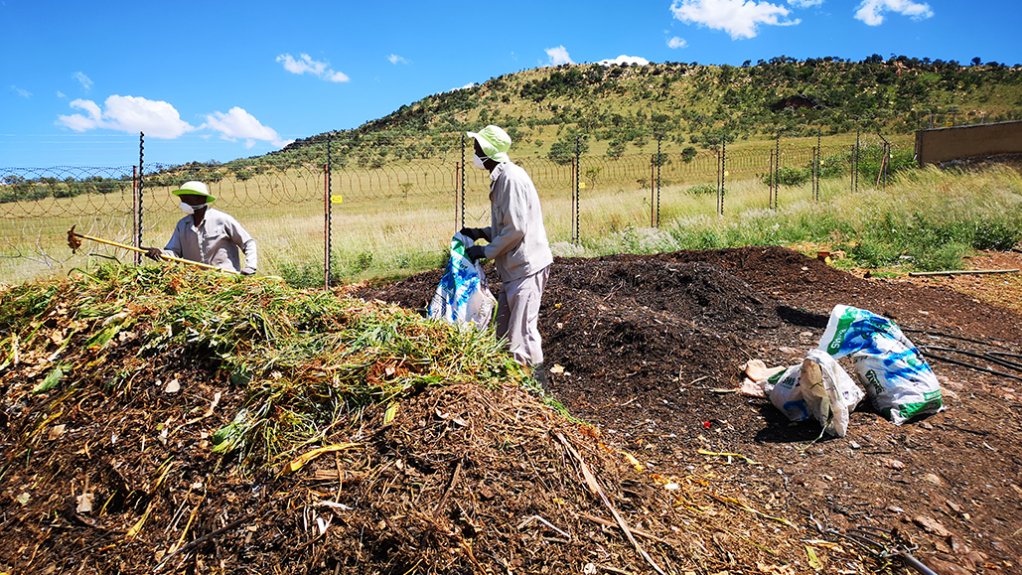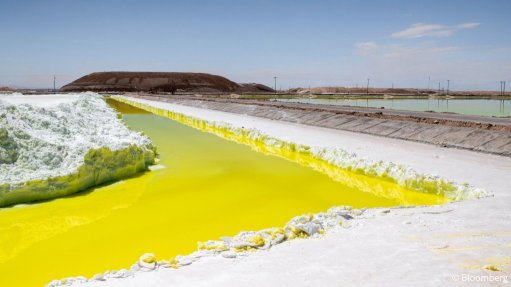Food-waste composting aid manufacturer Bokashi Bran eyes US market
With more local residential and commercial kitchens using the trademarked Bokashi Bran food-waste composting system and the product readily available from building material retail outlets Builders Warehouse and Chamberlains, as well as online stores, environmentally concerned bokashi manufacturer Bokashi Bran has set its sights on exporting to the US, says owner Bronwyn Jones.
The company intended to start exporting the Gauteng-made product this year, but Covid-19 put a stop to its plans.
“We had booked a trip to New Orleans to attend the annual Waste Expo conference in August and aimed to open export division Bokashi Bran USA.”
The US market, particularly California, is advanced regarding source separation and the composting of food waste, but it is greatly challenged by odour and vermin, says Jones.
Traditional composting always suggests that cooked food, proteins and dairy be omitted as these attract pests and cause pathogens in the compost pile and, hence, bad odours. Therefore, frequent costly collections are necessary.
The bokashi made by the company is a wheaten-bran that has been brewed with trademarked effective-microorganisms (EM), which include yeast and lactic acid bacteria.
“These microbes ferment the food waste and stop the putrefaction process to enable its safe composting,” explains Jones.
The EM in Bokashi Bran also has phototropic microbes that speed up the composting process. Instead of seven to ten months, Bokashi Bran will stabilise compost in seven to ten weeks.
The Environmental Case
“Food waste is considered the third-largest contributing factor to global warming when dumped at a landfill site, with each tonne emitting 627 kg of carbon dioxide-equivalent into our atmosphere, owing to the methane gas generated when food waste putrefies,” states Jones.
Pre-Covid-19 commercial kitchens were adopting the principle of diverting food waste from landfill, with the National Waste Minimisation Strategy having set a 50% ban on organics at landfill by 2022 and an outright ban from 2027.
Corporate accountability and sustainability were receiving significant attention up until March this year, highlights Jones.
She adds that many large national hotel chains had committed to the Bokashi Bran food-waste management system, which diverts bokashi-treated food waste to commercial composters in Johannesburg and Cape Town.
However, owing to the Covid-19 outbreak, the company lost 95% of its customers when the hospitality industry shut down.
“It’s been a difficult year for hospitality and the small companies that supply products and services to the industry. The awakening of the industry will be slow, especially with international travel still being restricted.”
The Bokashi Way
Bokashi was originally developed in Japan in the late 1970s by Dr Teruo Higa, a professor at the University of the Ryukyus, in Okinawa. He was looking for alternative ways to produce high-quality agricultural products without using chemical fertilisers, artificial hormones or chemical pesticides.
Jones first started using bokashi ten years ago when she moved from Durban to Johannesburg.
“The mixture of microbes showed beneficial results with various applications and so the product developed and grew. For example, EM® is widely used in Japan as a sanitiser and disinfectant in hospital and in construction to stop cracking concrete. It has also shown exceptional results in water and soil rehabilitation. Thereby, our mines could rehabilitate land while they are still active and feed thousands of people a day.”
The Bokashi Bran manufacturing facility is based in Robertville Industrial Park, Roodepoort, while the company looks for larger premises.
“We need to increase production capacity. But, thanks to Covid-19, these plans may need to be pushed out owing to financial concerns,” says Jones.
It takes the company four months to produce and package its bokashi, following strict manufacturing processes to ensure the highest quality product is achieved.
“Pan Mixers South Africa supplied us with a mixing machine that enables us to mix 60 kg of bokashi in about ten minutes, reducing the mixing time from four hours. The bokashi is then placed in a brewing room, before it is dried for packing,” states Jones.
Normally, the manufacturing of the bokashi is undertaken by a four-person team, which use proudly South African microbes following technology developed by Dr Higa.
“Thankfully, before lockdown, we stocked up on EM and are hoping to ramp up to full production capacity by August.”
The company can produce 5 t of bokashi a month in summer, with the production process a little slower in the winter months owing to the lower temperatures, and intends to double production by next year.
Jones emphasises that there is a compelling business case for reducing food waste which includes financial, environmental and social factors.
“The adoption of the Bokashi Bran system starts the process of identifying why so much food is wasted and the solutions to reduce that waste, while simultaneously benefitting our soils,” she concludes.
Article Enquiry
Email Article
Save Article
Feedback
To advertise email advertising@creamermedia.co.za or click here
Announcements
What's On
Subscribe to improve your user experience...
Option 1 (equivalent of R125 a month):
Receive a weekly copy of Creamer Media's Engineering News & Mining Weekly magazine
(print copy for those in South Africa and e-magazine for those outside of South Africa)
Receive daily email newsletters
Access to full search results
Access archive of magazine back copies
Access to Projects in Progress
Access to ONE Research Report of your choice in PDF format
Option 2 (equivalent of R375 a month):
All benefits from Option 1
PLUS
Access to Creamer Media's Research Channel Africa for ALL Research Reports, in PDF format, on various industrial and mining sectors
including Electricity; Water; Energy Transition; Hydrogen; Roads, Rail and Ports; Coal; Gold; Platinum; Battery Metals; etc.
Already a subscriber?
Forgotten your password?
Receive weekly copy of Creamer Media's Engineering News & Mining Weekly magazine (print copy for those in South Africa and e-magazine for those outside of South Africa)
➕
Recieve daily email newsletters
➕
Access to full search results
➕
Access archive of magazine back copies
➕
Access to Projects in Progress
➕
Access to ONE Research Report of your choice in PDF format
RESEARCH CHANNEL AFRICA
R4500 (equivalent of R375 a month)
SUBSCRIBEAll benefits from Option 1
➕
Access to Creamer Media's Research Channel Africa for ALL Research Reports on various industrial and mining sectors, in PDF format, including on:
Electricity
➕
Water
➕
Energy Transition
➕
Hydrogen
➕
Roads, Rail and Ports
➕
Coal
➕
Gold
➕
Platinum
➕
Battery Metals
➕
etc.
Receive all benefits from Option 1 or Option 2 delivered to numerous people at your company
➕
Multiple User names and Passwords for simultaneous log-ins
➕
Intranet integration access to all in your organisation



















